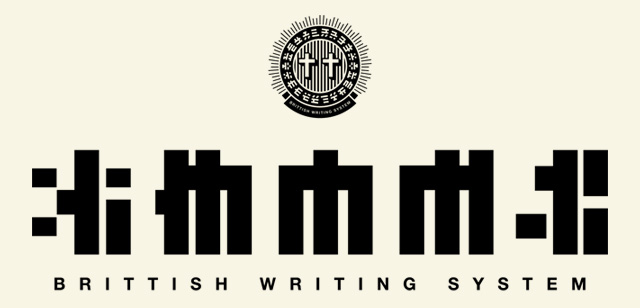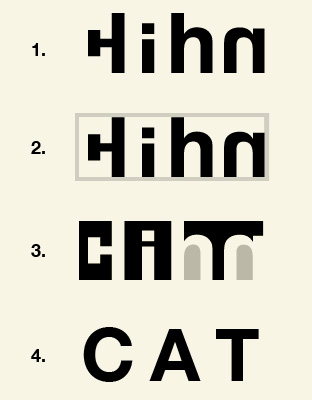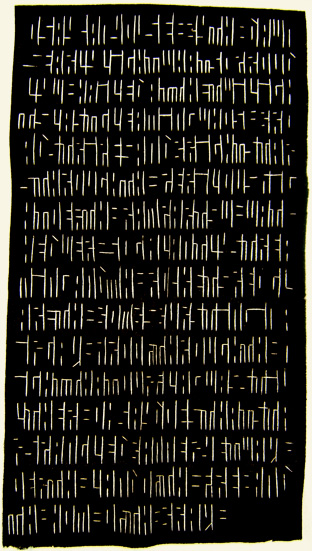To create a visual language to discuss the processes by which people are defined as "other".
While borrowing aesthetics from many visual cultures and writing systems, I sought to create a writing system which felt foreign and unfamiliar but which actually presented text in the Latin alphabet and English language. Overall, I wanted to evoke the feeling of traveling and being challenged to grasp for meaning and understanding while interacting with objects with which the majority of people in the United States are very familiar.


This flag of the United States has the words of the national anthem of the United States painted in Brittish onto the alternating red and white stripes. This painting intentionally combines the flag with the national anthem, both of which share the name of "Star Spangled Banner", just as the two are similarly combined when people face the flag while singing the anthem.
Because Brittish characters are less characters themselves and more to serve the purpose of defining characters from the negative space around them, reading Brittish texts requires a constant switching back and forth between recognizing and reading form and formlessness.
As seen in the alphabet chart at right, the characters of the Brittish alphabet very depending upon their placement as the first, last, or and letter in the middle of a word. It is also important to note that this chart only includes the fundamental character forms and does not include the numerous ligatures formed when certain characters precede and follow eachother in a word. Examples of such ligatures can be seen above in the word "BRITTISH" where the three forms in the middle which resemble the Latin letter "M", but each with additional ears and ascenders.
The four-step process below demonstrates how Brittish text can be read as Latin characters using the word "CAT" as an example. Step (1.) shows the original Brittish characters. A box is drawn around the Brittish characters in step (2.) to help with the process of seeing formless, open negative space as finite positive forms. Step (3.) has inverted the boxed negative space into positive negative forms. The inverted negative forms are shown in step (4.) to bear similarity to the Latin spelling of the word "CAT".


The fundamental concept of the Brittish Writing System is to evoke a sense of "othering" our of otherwise familiar and easily recognized objects. To better describe this intent, it is useful to consider the example of traveling abroad in a foreign country where everyday, commonplace objects and experiences become odd and more difficult to understand. This is an experience which an English-born person born in the United States will seldom if ever be able to understand about their home country: what does the United States of America feel like to the rest of the world and those visiting from other countries?
The artifacts with which I have chosen to associate the Brittish Writing System were deliberately chosen because of their level of familiarity and their relationship to nationhood, religion, government, history, and / or culture. I am particularly interested in the role these subject areas play in the process of determing our experiences of "belonging" and "otherness".
The image at right is a poster design for the 2010 FIFA World Cup in South Africa. It features Cape Town's Greenpoint Stadium with text that reads "WORLD CUP '10 SOUTH AFRICA". Two different techniques are used to make this text less recognizable as Latin characters. The larger characters are arranged to be read vertically and in doing so, make substantial changes to the structre of the Brittish charactes. The text in white, which reads "South Africa", has been kerned into squared character groupings. This causes the Latin characters in the negative space to be elongated and/or condensced horizontally.

From the same series of work as the flag shown previously, this woodcut print also draws upon the United States, more specifically the "Star Spangled Banner", as its subject matter.
